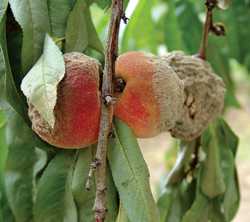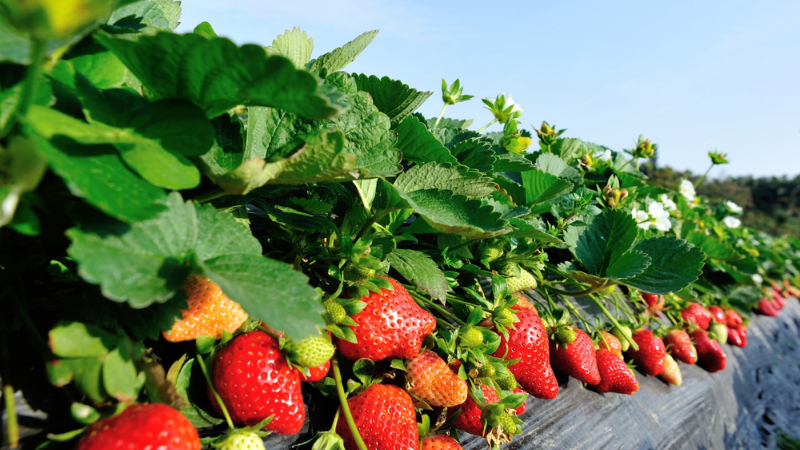New Methods For Brown Rot Control

Last year, some Southeastern peach growers discovered something they hoped they would never see: a multiple fungicide-resistant strain of brown rot.
For the past three years, peach growers in Georgia and South Carolina have been using a handheld monitoring kit to screen the three fungicide classes registered for brown rot: demethylation-inhibitors (DMIs), quinone outside inhibitors (QoIs), and benzimidazoles. Regional fungicide resistance monitoring with this kit was implemented in both states to help growers make treatment decisions. Because the resistant strains of brown rot were resistant to only one of the three fungicides, growers could use the kit to determine which fungicide would work.
However, in a few orchards, the monitoring test revealed a strain of brown rot that is resistant to multiple fungicides, leaving those growers without a fungicide option. As a result, scientists have embarked on a new project to find an option for these growers. A new $139,989 USDA Southern Regional IPM grant will fund the research.
Led by Harald Scherm, plant pathologist at the University of Georgia, the research team will test compounds to bolster preharvest fungicide treatments and experiment with ways to improve postharvest treatments used to protect the fruit during shipping and handling. “We need to reevaluate the strategies for treating brown rot both preharvest and postharvest,” Scherm says.
With no brown rot resistant peach variety available, researchers must find options that will improve the effectiveness of current practices. Scherm says that previous lab tests have shown that calcium, chitosan, and iron seem to suppress some of the pathogenic qualities of Monilinia fructicola, the causal pathogen of brown rot. He and other scientists hypothesize that adding a combination of these compounds to the current fungicide applications may enhance the activity of conventional fungicides.
Ongoing Tests
Although the compounds have shown promising results in the lab individually, they still need to be tested in combinations in the field before they can be useful to growers. The research team plans to test the hypothesis that adding the compounds to current fungicide applications will protect the crop in the presence of fungicide-resistant populations of the brown rot pathogen.
At the same time, researchers also plan to experiment with technologies that will improve postharvest practices. “There is more widespread use of fruit wax coatings and fungicide post-harvest, so we’ve included that in the project,” Scherm says.
Currently fruit receives a postharvest treatment with a mixture of the fungicide fludioxonil (Scholar, Syngenta Crop Protection) and a wax solution. Although the fludioxonil residue should protect the fruit from disease, many peaches still become infected with brown rot while in the packinghouse. Lab tests on samples of treated fruit from packinghouses reveal that the residue on the fruit varies widely and is significantly less than it should be.
“With the current application technology, the treatment is somehow being washed off the fruit,” Scherm says. “It’s being applied at too high a volume, and the fruit is too wet when the fungicide is applied.”
The team will experiment with new technologies to apply postharvest treatments that will effectively protect the fruit against brown rot while minimizing the amount of fludioxonil applied. However, since several packinghouses have been using the same technology for years, the team must ensure that using a new method will be economically feasible for them.
Once the team has discovered effective pre- and postharvest treatment technologies, they will answer the economic question for both growers and packinghouse managers. Researchers hope that the methods that work will be economically sustainable as well. “A positive outcome of this project would be the judicious use of preharvest fungicides and an effective use of postharvest treatments,” Scherm says.









